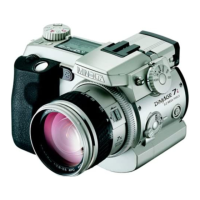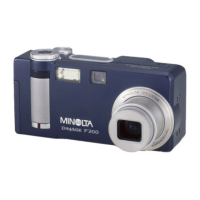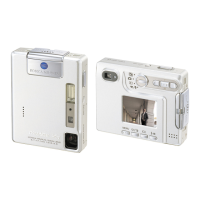63
To make a flash bracket, set the continuous-advance or single-frame advance bracketing drive mode
and raise the camera flash. The bracket will not advance automatically; the shutter-release button
must be pressed for each exposure. The ambient exposure is not bracketed.
When exposure brackets are made in S exposure mode, the aperture controls the bracket. In A and
M modes, the shutter speed controls the bracket. The camera will use both the aperture and shutter
speed control the bracket in P mode.
With a Digital Effect bracket, if the contrast or color saturation is set to the maximum or minimum
level (±5), one bracket will be made at ± 6: +5, +4, +6. A RAW image cannot exceed the maximum
and minimum levels and will contain two identical brackets: +5, +4, +5. A black and white Filter brack-
et is made to the settings before and after the set Filter (p. 78). If Filter 10 is selected, the bracket
series will be 10, 9, 0.
Compose the picture as described in the basic recording section (p.
33). Press and hold the shutter-release button all the way down (1) to
make the bracket series; three consecutive images will be captured. If
single-frame advance bracketing is selected, the shutter-release but-
ton must be pressed for each exposure. If set to continuous AF (p.
46), the camera will continue to focus during a continuous bracket.
Number of frames in
bracketing series
Frame counter
0.3 Ev
bracket
Normal
Under
Over
1

